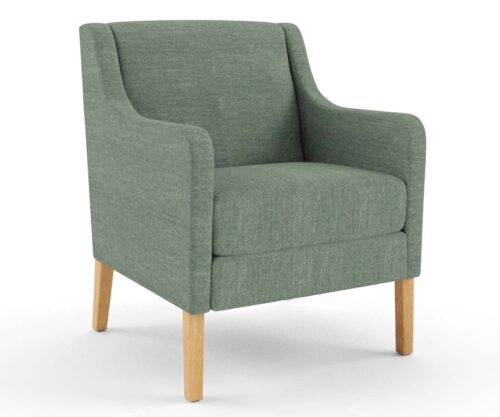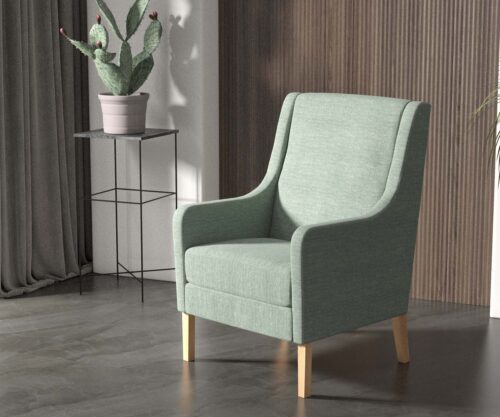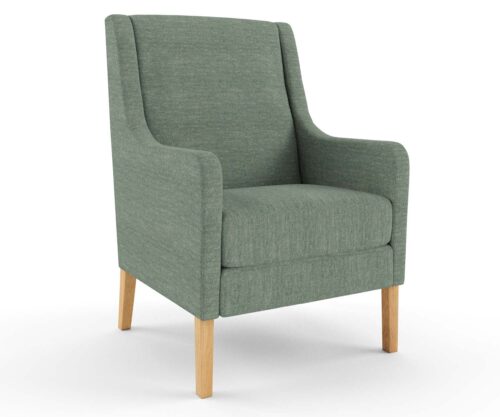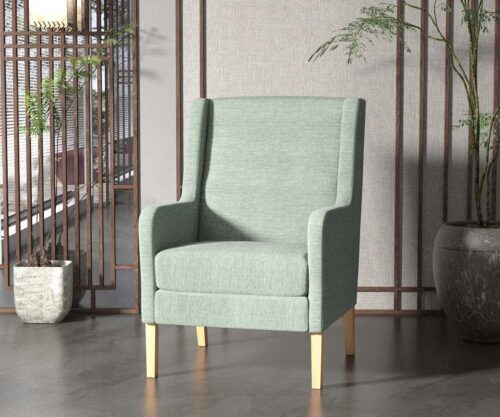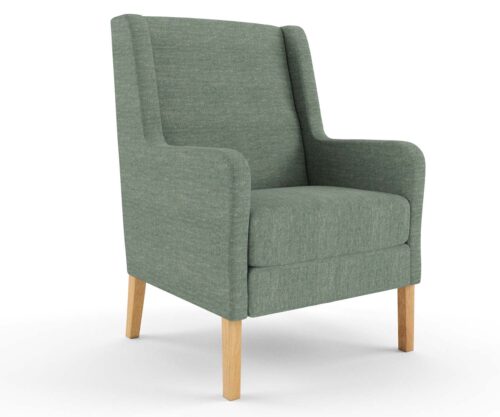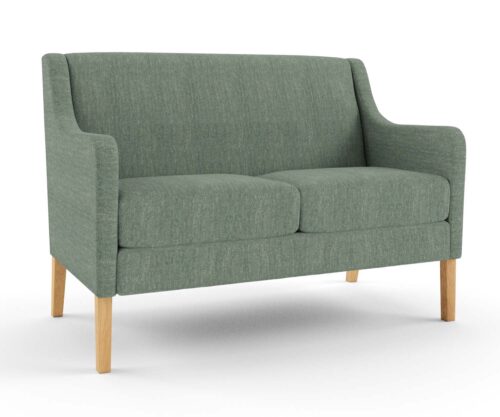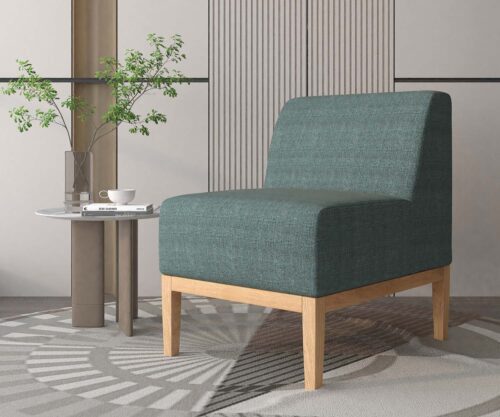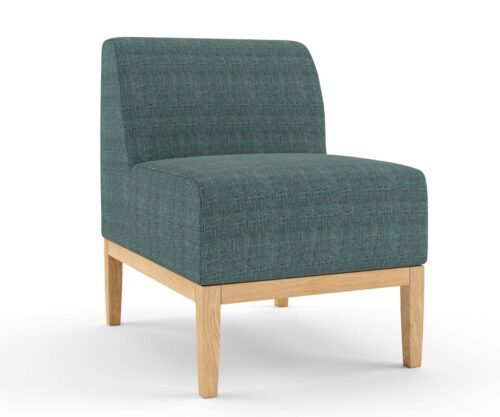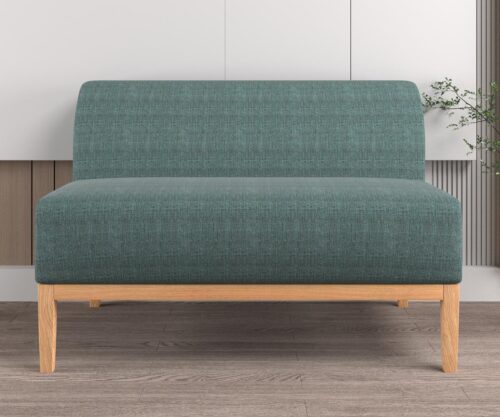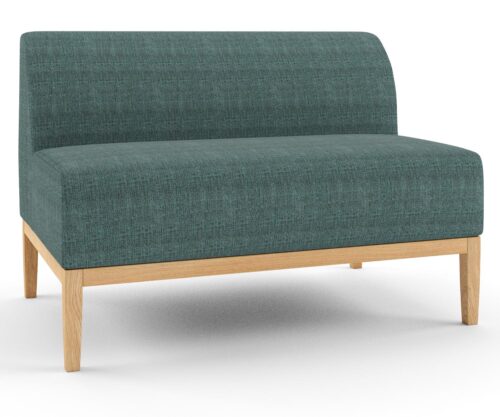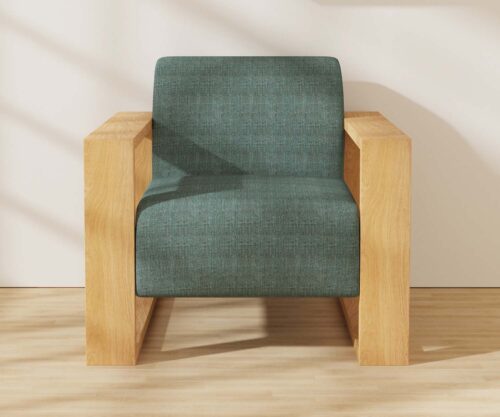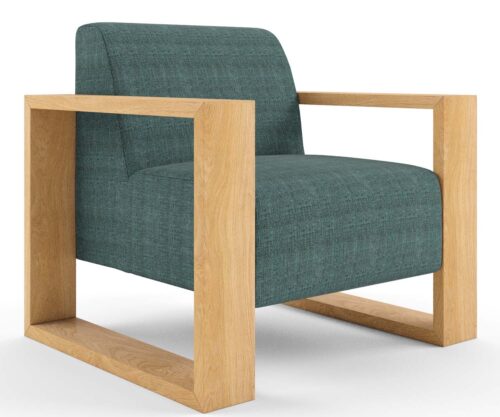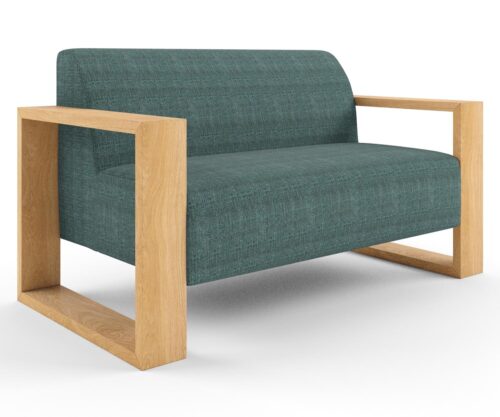Australian Furniture Manufacturer Lead Times: 3 Reasons Why They’re at Record Highs

Australian furniture manufacturing lead times explained
Since 2020, there seems to be no such thing as short lead times in Australian furniture manufacturing.
But it’s not just furniture manufacturing. Supply chains across all sectors around the world are under extreme pressure and if one link in the supply chain is broken, it slows down everything else.
In fact, the level of supply chain disruptions is currently the worst we have seen since the 1970s. Australian manufacturers continue to operate below capacity, despite growth in orders and output.
Logistics experts say that this crisis has been on the boil for a while, but COVID-19 really got things bubbling along. Other contributing factors include labour shortages, increased freight costs, raw material scarcity, the impact of climate change, a lack of shipping containers, and freight capacity being stretched due to vaccination demands and state border restrictions within Australia.
This combination of factors means that the issue of long lead times is likely to outlive the pandemic and extend over the next few years.
Let’s have a closer look at 3 of the reasons behind burgeoning Australian manufacturing lead times.
1. Raw material [timber] shortage: Worldwide timber shortages have sent construction and manufacturing lead times and timber prices soaring.
Over the last 2 years, Australia has experienced a housing boom spurred on by the Australian government’s HomeBuilder program. This has resulted in major delays and rising timber costs due to a global timber shortage.
Experts say that the global timber shortage is due to many countries choosing to use construction as stimulus and here in Australia, the HomeBuilder program proved to be more popular than anticipated.
Of course, it’s not just the construction industry that relies on timber. The Australian furniture manufacturing industry also relies heavily on this precious resource and although domestic timber production is up by 17%, it hasn’t been able to keep up with demand. This has seen lead times and timber prices soar, with much of the price rise being absorbed by manufacturers themselves.
What’s even more concerning is that it’s possible that we have not yet seen peak demand for timber.
2. Reduced freight capacity: Air, road, and shipping freight – costs are up and capacity is down.
There has been an unprecedented impact on manufacturing supply chains thanks to reduced freight capacity worldwide.
Global labour shortages are causing major interruptions in the freight sector. Staff feel unwell, they need to get tested and isolate and, in some situations, local restrictions prevent them from attending work. This results in congested ports, slow or interrupted road freight and ultimately, increased waiting time for clients.
We are also seeing a shortage of empty shipping containers and ships to transport them. Ships with full containers are lined up in droves, waiting to get into congested ports. Once unloaded, the full containers are stacked in shipyards, waiting to be transported by truck drivers and there are not enough truck drivers to transport them to their destinations.
Due to the congested ports, some shipping companies have reduced the number of vessels on the water and many ports have now stopped accepting empty containers because they have nowhere to put them. With no empty containers being shipped back to major exporters, they can’t ship their goods.
Within Australia, COVID-19 restrictions have also heavily impacted road freight capacity. For example, freight and logistics operators who wish to enter Queensland must fulfill requirements including having a valid Queensland Border Declaration Pass, and adhering to mandatory COVID-19 testing and mandatory vaccination requirements.
Then there are industry and organizational-based COVID-19 requirements with some companies requiring that all truck drivers must be vaccinated before attending the premises.
3. Trades skills and labour shortage: Where have all the tradies gone?
A recent Australian manufacturing industry survey has found that we are currently experiencing the worst labour shortage in 14 years. Domestic and international border closures have resulted in manufacturing employers having increasing difficulties finding experienced workers. That, combined with the labour shortage due to COVID-19 restrictions, has made having the right staff to meet increasing client demand extremely difficult.
The trades skills shortage is felt acutely within the Australian furniture manufacturing industry, with most furniture manufacturing skills making their way onto the Australian Government’s ‘National Skills Needed List’. This list identifies trades that are experiencing a national skills shortage. Although the Government is offering incentives for employers who take on apprentices learning these trades, it does not solve the labour shortage pain currently being felt by manufacturers Australia-wide.
But it’s not all doom and gloom; Australian manufacturers’ investment in plant and equipment is at the highest levels in five years. Businesses are taking advantage of record-low interest rates and government support measures to invest in new equipment. Strengthening business investment is the key to improving productivity and increasing competitiveness.
If you are looking for a furniture manufacturer, we strongly recommend finding one that follows a well-organised furniture manufacturing process and who communicates with you in a timely manner if there are issues with lead times.
By checking that you manufacturer has these systems in place, your furniture project will proceed smoothly without any unwanted costs or surprises. With over 20 years of experience in the aged care furniture manufacturing industry and with a tried-and-true manufacturing process in place, we bring solutions to our client’s unique circumstances; it’s what we do best.
FAQs about Australian Furniture Manufacturer Lead Times
Why are lead times for Australian furniture manufacturers currently at record highs?
Several factors contribute to extended lead times, including increased demand, supply chain disruptions, and challenges in sourcing raw materials.
How does increased demand impact lead times for furniture manufacturing in Australia?
High demand, especially in the wake of home improvement trends and increased furniture purchases, puts additional strain on manufacturers, causing production delays.
What role do supply chain disruptions play in prolonged lead times?
Global supply chain disruptions, including transportation delays, shortages of components, and increased shipping costs, have a direct impact on the timely delivery of raw materials and finished products.
Are there specific raw materials that are experiencing shortages in the Australian furniture industry?
Certain materials, such as timber and foam, have faced shortages due to supply chain disruptions, impacting the production process and leading to longer lead times.
How do international factors contribute to the lead time challenges for Australian furniture manufacturers?
International factors, such as global economic conditions, geopolitical events, and trade restrictions, can affect the availability and cost of materials, influencing lead times.
Can Australian manufacturers adjust lead times to meet customer demands during peak seasons?
Manufacturers may have limited flexibility during peak seasons due to increased demand and supply chain challenges. Planning ahead and communicating with customers about potential delays is crucial.
Are there steps that manufacturers can take to mitigate lead time challenges?
Manufacturers can explore alternative suppliers, implement efficient inventory management, and invest in technology to streamline processes. However, some challenges may be beyond immediate control.
How can customers stay informed about lead times when ordering furniture from Australian manufacturers?
Regular communication with manufacturers is key. Customers should inquire about expected lead times, potential delays, and any updates throughout the production process.
Does the location of the manufacturing facility impact lead times for furniture in Australia?
Yes, the location of the manufacturing facility can influence lead times, especially if it is situated in an area with logistical challenges or if it relies heavily on imported materials.
Are there any industry-wide initiatives to address lead time challenges in Australian furniture manufacturing?
Industry associations and manufacturers may collaborate to address challenges collectively, but solutions often involve a combination of industry and individual efforts.
Can customization requests contribute to longer lead times for furniture orders?
Yes, customization requests may require additional processing time, especially if specific materials or finishes need to be sourced. Manufacturers typically communicate any additional lead time associated with custom orders.
Is there a foreseeable improvement in lead times for the Australian furniture manufacturing industry?
While factors like supply chain stabilization and increased production capacity can contribute to improvements, the timeline for a return to normal lead times may vary and is subject to external influences.
It’s important for both manufacturers and customers to stay informed, communicate effectively, and be adaptable in navigating the current challenges in the furniture manufacturing industry.
More News
Australian Furniture Manufacturer Lead Times: 3 Reasons Why They’re at Record Highs

Australian furniture manufacturing lead times explained
Since 2020, there seems to be no such thing as short lead times in Australian furniture manufacturing.
But it’s not just furniture manufacturing. Supply chains across all sectors around the world are under extreme pressure and if one link in the supply chain is broken, it slows down everything else.
In fact, the level of supply chain disruptions is currently the worst we have seen since the 1970s. Australian manufacturers continue to operate below capacity, despite growth in orders and output.
Logistics experts say that this crisis has been on the boil for a while, but COVID-19 really got things bubbling along. Other contributing factors include labour shortages, increased freight costs, raw material scarcity, the impact of climate change, a lack of shipping containers, and freight capacity being stretched due to vaccination demands and state border restrictions within Australia.
This combination of factors means that the issue of long lead times is likely to outlive the pandemic and extend over the next few years.
Let’s have a closer look at 3 of the reasons behind burgeoning Australian manufacturing lead times.
1. Raw material [timber] shortage: Worldwide timber shortages have sent construction and manufacturing lead times and timber prices soaring.
Over the last 2 years, Australia has experienced a housing boom spurred on by the Australian government’s HomeBuilder program. This has resulted in major delays and rising timber costs due to a global timber shortage.
Experts say that the global timber shortage is due to many countries choosing to use construction as stimulus and here in Australia, the HomeBuilder program proved to be more popular than anticipated.
Of course, it’s not just the construction industry that relies on timber. The Australian furniture manufacturing industry also relies heavily on this precious resource and although domestic timber production is up by 17%, it hasn’t been able to keep up with demand. This has seen lead times and timber prices soar, with much of the price rise being absorbed by manufacturers themselves.
What’s even more concerning is that it’s possible that we have not yet seen peak demand for timber.
2. Reduced freight capacity: Air, road, and shipping freight – costs are up and capacity is down.
There has been an unprecedented impact on manufacturing supply chains thanks to reduced freight capacity worldwide.
Global labour shortages are causing major interruptions in the freight sector. Staff feel unwell, they need to get tested and isolate and, in some situations, local restrictions prevent them from attending work. This results in congested ports, slow or interrupted road freight and ultimately, increased waiting time for clients.
We are also seeing a shortage of empty shipping containers and ships to transport them. Ships with full containers are lined up in droves, waiting to get into congested ports. Once unloaded, the full containers are stacked in shipyards, waiting to be transported by truck drivers and there are not enough truck drivers to transport them to their destinations.
Due to the congested ports, some shipping companies have reduced the number of vessels on the water and many ports have now stopped accepting empty containers because they have nowhere to put them. With no empty containers being shipped back to major exporters, they can’t ship their goods.
Within Australia, COVID-19 restrictions have also heavily impacted road freight capacity. For example, freight and logistics operators who wish to enter Queensland must fulfill requirements including having a valid Queensland Border Declaration Pass, and adhering to mandatory COVID-19 testing and mandatory vaccination requirements.
Then there are industry and organizational-based COVID-19 requirements with some companies requiring that all truck drivers must be vaccinated before attending the premises.
3. Trades skills and labour shortage: Where have all the tradies gone?
A recent Australian manufacturing industry survey has found that we are currently experiencing the worst labour shortage in 14 years. Domestic and international border closures have resulted in manufacturing employers having increasing difficulties finding experienced workers. That, combined with the labour shortage due to COVID-19 restrictions, has made having the right staff to meet increasing client demand extremely difficult.
The trades skills shortage is felt acutely within the Australian furniture manufacturing industry, with most furniture manufacturing skills making their way onto the Australian Government’s ‘National Skills Needed List’. This list identifies trades that are experiencing a national skills shortage. Although the Government is offering incentives for employers who take on apprentices learning these trades, it does not solve the labour shortage pain currently being felt by manufacturers Australia-wide.
But it’s not all doom and gloom; Australian manufacturers’ investment in plant and equipment is at the highest levels in five years. Businesses are taking advantage of record-low interest rates and government support measures to invest in new equipment. Strengthening business investment is the key to improving productivity and increasing competitiveness.
If you are looking for a furniture manufacturer, we strongly recommend finding one that follows a well-organised furniture manufacturing process and who communicates with you in a timely manner if there are issues with lead times.
By checking that you manufacturer has these systems in place, your furniture project will proceed smoothly without any unwanted costs or surprises. With over 20 years of experience in the aged care furniture manufacturing industry and with a tried-and-true manufacturing process in place, we bring solutions to our client’s unique circumstances; it’s what we do best.
FAQs about Australian Furniture Manufacturer Lead Times
Why are lead times for Australian furniture manufacturers currently at record highs?
Several factors contribute to extended lead times, including increased demand, supply chain disruptions, and challenges in sourcing raw materials.
How does increased demand impact lead times for furniture manufacturing in Australia?
High demand, especially in the wake of home improvement trends and increased furniture purchases, puts additional strain on manufacturers, causing production delays.
What role do supply chain disruptions play in prolonged lead times?
Global supply chain disruptions, including transportation delays, shortages of components, and increased shipping costs, have a direct impact on the timely delivery of raw materials and finished products.
Are there specific raw materials that are experiencing shortages in the Australian furniture industry?
Certain materials, such as timber and foam, have faced shortages due to supply chain disruptions, impacting the production process and leading to longer lead times.
How do international factors contribute to the lead time challenges for Australian furniture manufacturers?
International factors, such as global economic conditions, geopolitical events, and trade restrictions, can affect the availability and cost of materials, influencing lead times.
Can Australian manufacturers adjust lead times to meet customer demands during peak seasons?
Manufacturers may have limited flexibility during peak seasons due to increased demand and supply chain challenges. Planning ahead and communicating with customers about potential delays is crucial.
Are there steps that manufacturers can take to mitigate lead time challenges?
Manufacturers can explore alternative suppliers, implement efficient inventory management, and invest in technology to streamline processes. However, some challenges may be beyond immediate control.
How can customers stay informed about lead times when ordering furniture from Australian manufacturers?
Regular communication with manufacturers is key. Customers should inquire about expected lead times, potential delays, and any updates throughout the production process.
Does the location of the manufacturing facility impact lead times for furniture in Australia?
Yes, the location of the manufacturing facility can influence lead times, especially if it is situated in an area with logistical challenges or if it relies heavily on imported materials.
Are there any industry-wide initiatives to address lead time challenges in Australian furniture manufacturing?
Industry associations and manufacturers may collaborate to address challenges collectively, but solutions often involve a combination of industry and individual efforts.
Can customization requests contribute to longer lead times for furniture orders?
Yes, customization requests may require additional processing time, especially if specific materials or finishes need to be sourced. Manufacturers typically communicate any additional lead time associated with custom orders.
Is there a foreseeable improvement in lead times for the Australian furniture manufacturing industry?
While factors like supply chain stabilization and increased production capacity can contribute to improvements, the timeline for a return to normal lead times may vary and is subject to external influences.
It’s important for both manufacturers and customers to stay informed, communicate effectively, and be adaptable in navigating the current challenges in the furniture manufacturing industry.
Commercial furniture by room
Based in Brisbane, we’re an Australian manufacturer of health and aged care furniture, retirement living furniture, hotel and accommodation furniture and student accommodation furniture. We also supply a range of commercial office furniture.
Is your commercial furniture built to last?
Not sure? Get your Furniture Quality Checklist today.
Discover what you need to know before purchasing commercial furniture. Confidently order furniture without compromising on quality, style, and the comfort and safety of your clients.
PLUS, sign up for Retirement Living and Aged Care Industry News.


